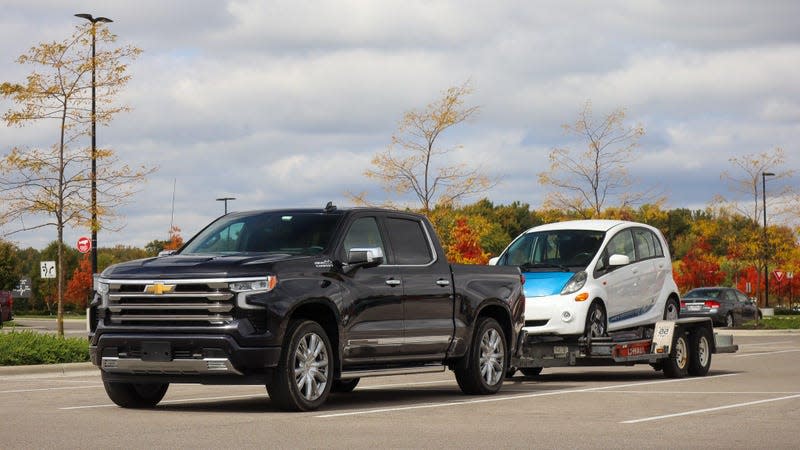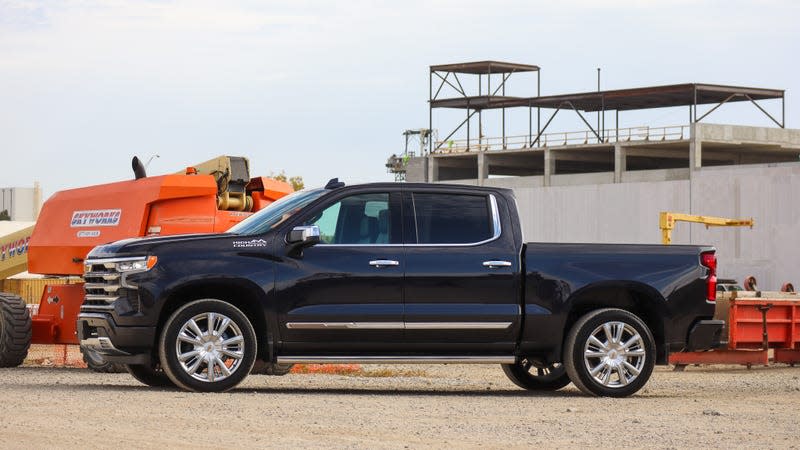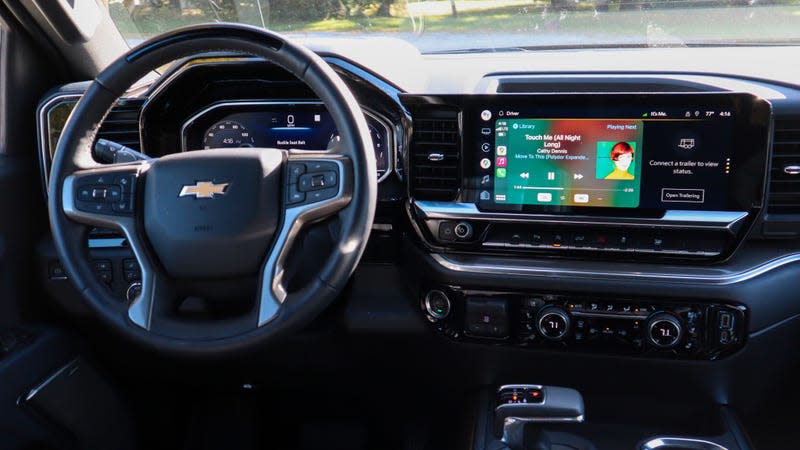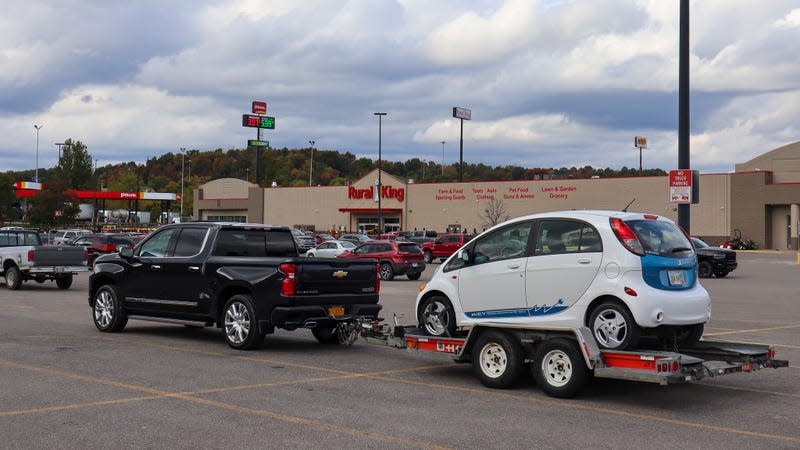The 2022 Chevy Silverado With Super Cruise Makes Towing Almost Effortless

Modern pickups drive damn near as well as many luxury sedans, which arguably facilitates the troublesome trend of using pickup trucks as family sedans. Today’s trucks are tech-laden, sophisticated things, a far cry from the pickups we had just a few decades ago. How do you make that job even easier? Well, you make a pickup truck that can drive itself. With a trailer. Sort of.
Full Disclosure: Chevrolet generously loaned me a 2022 Silverado 1500 High Country equipped with Super Cruise to tow my Mitsubishi i-MIEV from Columbus, Ohio to Winchester, Virginia and back. After a little over a thousand miles, I’d say both the Silverado and Super Cruise are pretty cool, even if they do have a few faults.
Read more

The truck Chevrolet sent me was a 2022 Silverado High Country with basically every option box checked. At $72,950, this is basically the most expensive Silverado you can buy without upgrading to the 2500, ZR2, or HD series. Refreshed for 2022, the Silverado’s updates could easily be misconstrued as just a few minor changes.
After all, on the outside, the new truck doesn’t look all that different. The front fascia has been restyled, with the biggest change being the boomerang-shaped DRLs. But really, it’s the interior and the tech upgrades that set apart the 2022 and forward Silverado.
The dashboard and center console have been completely restyled. GM stepped up the quality here, with better plastics and a more understated application of metal accents. My top-trim High Country came with a swanky retro blue-tinted leather coating on all surfaces, mixed with some pretty good open-pore wood.
In the center, a 13.4-inch touchscreen controls most functions, although there are hard buttons and knobs for HVAC and volume. The screen itself is super vibrant; I personally think it’s one of the prettiest screens on the market, with good color and a strong black point. It’s always visible, even in situations that introduce glare.

Most notable, though, is that the touchscreen is using Google’s new car-based operating system. Essentially, it’s an automotive version of Android; first seen on the Polestar 2, the operating system is now available to use by any manufacturer who wants it (and wants to pay Google for the pleasure). The Android system has native Google services embedded into it, like Google Maps or Google Assistant.
I’m glad GM outsourced the infotainment interface to a real tech company here; I was impressed with the Android Automotive application in the Polestar 2, and I’m largely impressed in the Silverado. The flow is straightforward, the interface is easy to use, and graphically, it’s pleasing to look at. Still, there were a few quirks: the Silverado’s infotainment was sometimes laggy, and inputting addresses into Google Maps sometimes wasn’t as easy as it could have been. The keypad on the screen had issues with lag, and overall the system didn’t seem as quick at locating addresses as researching them on your phone.
Secondly, the truck does have Apple Carplay, but because CarPlay is phone-based and essentially runs parallel to the actual infotainment screen’s duties, certain things don’t get passed over from the phone to the dashboard. Like, if I was using Google Maps on my phone, then plugged it into the vehicle, I’d be navigating on Google Maps via Apple Carplay, not via the integrated Google Maps in the Android Automotive OS. It seems like a silly thing to nitpick, but using Google Maps integrated into the OS is crucial to Super Cruise’s operation.
Oh yeah: with the 2022 refresh, GM gave the Silverado Super Cruise, albeit only on the topmost High Country trim. Super Cruise is a Level 2 autonomous driving system, once only available on Cadillacs; on select geofenced roads, it allows for completely hands-free driving.

Super Cruise is the biggest reason why I wanted to get behind the wheel of the Silverado. I have a confession: I low-key hate towing. My route for this trip went from Columbus, Ohio to Winchester, Virginia, a 350-mile slog through the northern tip of Appalachia, through WV, MD, PA, and VA, over hills and valleys, much of it with zero cell phone service.
I’ve done this route before, using Super Cruise in a Bolt EUV and towing with a Honda Ridgeline. I wondered, would doing both in the Silverado be more than the sum of those two separate experiences? Towing in the Ridgeline made me like the truck less, and I found Super Cruise in the Bolt to be kind of pointless; I turned it off and drove manually after an hour and a half into my seven hour journey.
And yet, while towing in a big, powerful truck, Super Cruise just felt right, if a little surreal.

 Yahoo Autos
Yahoo Autos 